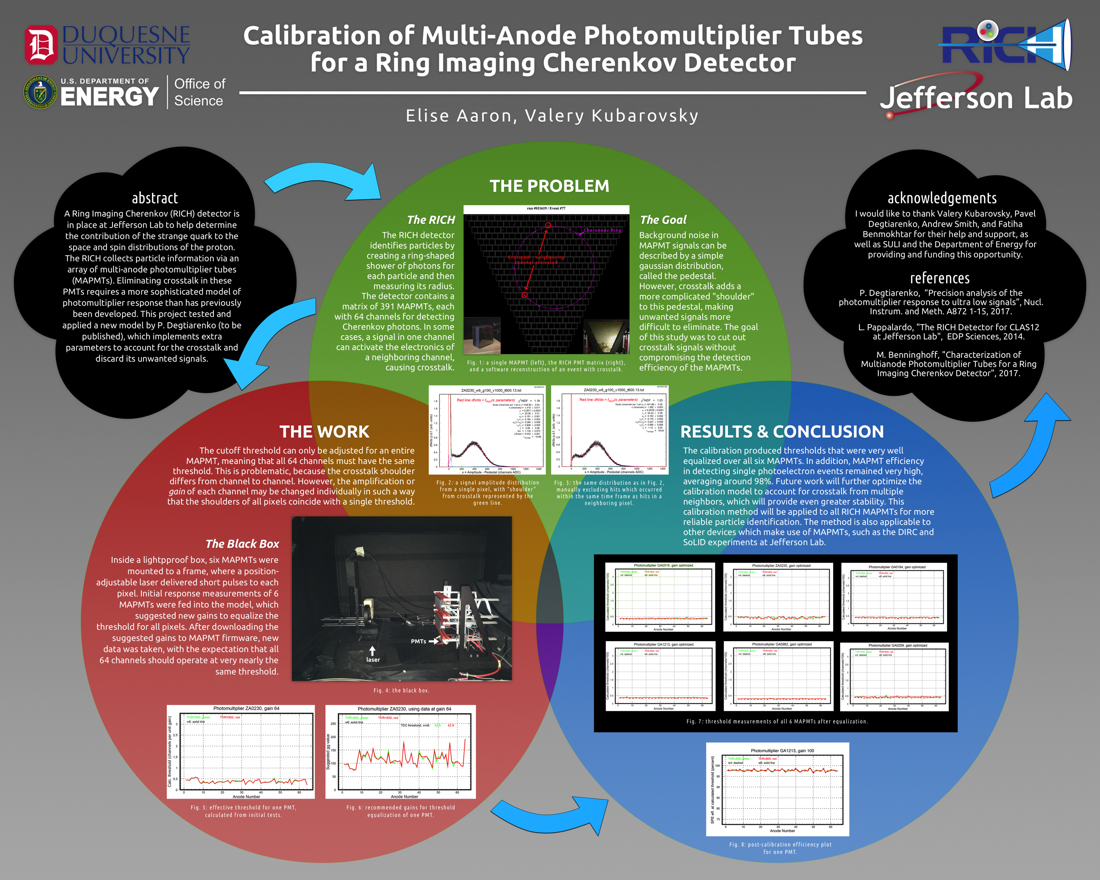Undergraduate Research at Jefferson Lab
Calibration of Multi-Anode Photomultiplier Tubes for a Ring Imaging Cherenkov Detector
Student: Elise Aaron
School: Duquesne University
Mentored By: Valery Kubarovsky
The proton is described by the standard model of particle physics as three valence quarks, held together by gluons, in a sea of virtual quark pairs and gluons. The space and spin distributions of various sea quarks in the proton are not well understood, and a Ring Imaging Cherenkov (RICH) detector is in place at Jefferson Lab to help determine the contribution of one of these, namely the strange quark. The RICH collects particle information via an array of multi-anode photomultiplier tubes (MAPMTs). Because of their multi-channel design, the PMTs' performance in the low light conditions of the RICH is somewhat irregular. Eliminating crosstalk in these PMTs requires a more sophisticated model of photomultiplier response than has previously been developed. This project tested and refined a new model by P. Degtiarenko (to be published), which approximates the irregularities caused by crosstalk. A select sample of PMTs from the RICH underwent initial tests to map their performance, followed by a second set in which model-suggested parameters were used to tune their individual responses to a laser pulse. Our results show response changes in close agreement with model predictions, which will provide an effective means of compensation for both crosstalk and background noise. The authors expect to apply this calibration method to all RICH MAPMTs, allowing for more precise and reliable particle identification. The method is also applicable to any other detector or device using multi-anode photomultiplier technology, such as the DIRC and SoLID experiments at Jefferson Lab.

Citation and linking information
For questions about this page, please contact Education Web Administrator.
